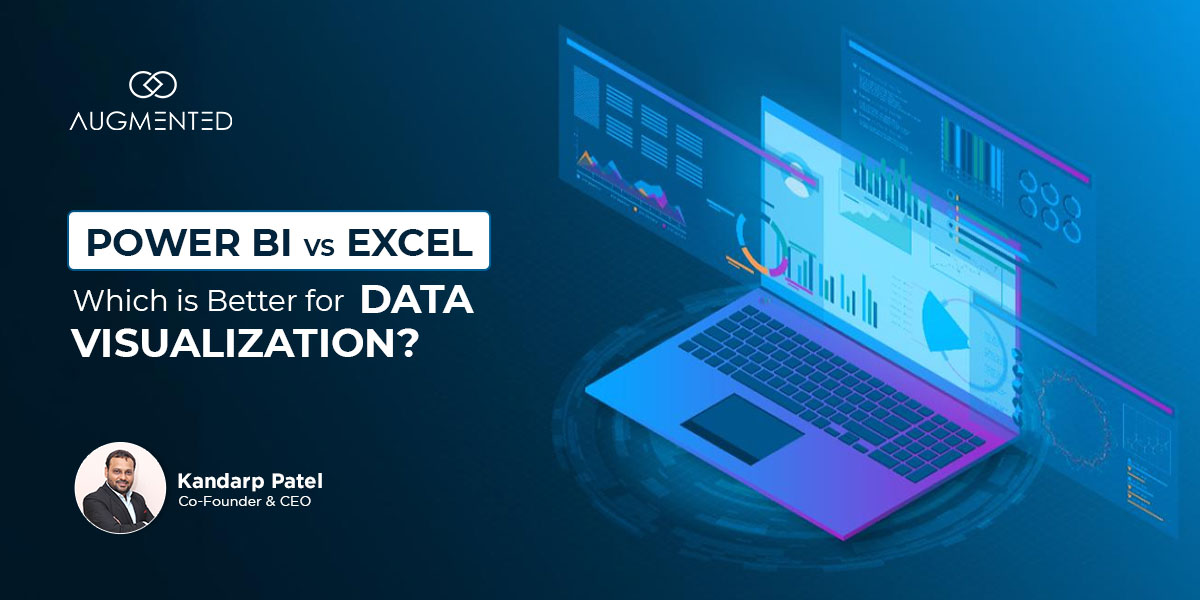Is your data also exceeding its storage space? Is it about to burst out of your current system like a digital bomb in a suitcase? Ever-expanding data and outdated storage systems are a headache for many.
Businesses yearn to migrate to a new and modern system, but the array of data migration strategies in the current market leaves them puzzled concerning which is better.
Are you facing the same? Don't worry, because we hear you. Dive into the blog to learn about different strategies and select the data migration strategy that best suits your business.
Ready to move out of the stuffed staircase? Dig in.
Why do Businesses Migrate their Data?
Are you okay with risking your data because you chose the wrong migration process? Data migration may seem like child’s play, but it isn’t. From losing your data to data breaches, you may face several data migration problems.
Migrating data from your legacy system to a new system requires meticulous planning, flawless execution, and expert management. But, most importantly it needs the right data migration strategy.
Apart from data growing at a compound annual growth rate of 19.2% by 2025, there are many other reasons why businesses opt for data migration, including:
- Expansion, upgradation, and replacement of existing data storage systems
- Outdated legacy data storage systems
- Moving to the cloud to optimize business operations
- Website consolidation
- For infrastructure maintenance
- Moving to a centralized data warehouse
- Relocation of data centers
- For information sharing with other applications
Data migration has numerous benefits, but an unplanned and hasty migration can lead to many disruptions and failures. Your goal should be to accurately and efficiently migrate your data with utmost precision. Therefore, you need good data migration planning.
Why do Businesses Need a Right Data Migration Strategy?
Every business is different, and so is its data migration approach. You cannot expect it to be the same, right? Your preferences and need to migrate your data will differ from those of others.
For Example
Say you hire a data migration consultant. They will need a complete 360-degree analysis of your data. But before that, you should be aware of the volume of data, its cost, potential downtime, and overall business impact.
Therefore, understanding how data migration works for your business is essential. It is about knowing and assessing how much data will remain on your current or on-premise system versus how much data you will move to your new storage. (apart from many other aspects.)
You can make the process of selecting the right data migration strategy by asking yourself the following questions.
- What is the size and type of data you are migrating?
- What is your budget for the entire migration project?
- What is the amount of downtime your business can tolerate?
- Do you need to clean your data before migrating?
- What security measures will be apt for your business?
- Will your target system be compatible with your existing one?
- What are the scalability options with your new systems?
- What are your disaster recovery plans in case of data migration challenges?
- Is there a data migration approach that you are considering?
- What type of data migration strategy is best for your business?
All these questions will help you determine which data migration strategy is right for your business. Meanwhile, here are different data migration strategies to help you achieve a successful migration.
What are the Types of Data Migration Strategies?
Do you know around 83% of data migrations either fail or exceed their allotted budgets? You wouldn’t want your migration to be a ‘throwaway’ work, right?
So, to not keep all your efforts to be bare minimum, we have a list of different migration strategies for you. Choose the best fit for your business data and avoid the hassle of last-minute challenges.
1. Big Band Data Migration
A big-band data migration approach involves transferring all your data from source to target in one go. You can complete a big-bang migration when you are not using the applications or your systems, such as over a holiday or weekend.
Before you opt for a big-bang data migration approach, remember that you may face a significant downtime. Your entire system will be down and unavailable until the migration is 100% done.
So, if you are moving vast amounts of data, Big Bang data migration is not for you.
Pros:
- Less complex
- Less costly
- Less time consuming
Cons
- Significant downtime
- Risk of failure
- Not ideal for big data
Use case
Best suited for small businesses or projects with small amounts of data
2. Trickly Data Migration
The trickle data migration approach involves migrating your data in phases. The migration will run parallel to your old system until it is complete.
In this data migration process, data is migrated in smaller chunks, each with its individual timeline, goals, and quality checks. This migration is ideal if you need access to your data 24/7, as there is nearly zero downtime.
Pros:
- Near to zero downtime
- Less prone to errors or failures
- Allows continues business operations
Cons:
- Expensive
- Time-consuming
- Complex to manage
- Longer migration period
- Need resources and technical expertise to run two systems
Use Case:
Data migration is ideal for medium and small businesses. With proper technical expertise and resources, a trickle data migration approach can also be utilized for large business datasets.
3. Hybrid Data Migration
If you want to strike a balance, hybrid data migration combines the elements of Big Bang data migration and trickle data migration.
With hybrid data migration, you can migrate your critical data quickly while migrating less crucial data in phases. However, you must be ready to manage and integrate two environments simultaneously.
For businesses seeking a custom data migration solution, hybrid data migration puts you in control. With this strategy, you can confidently move your data, knowing that you have the power to manage the migration process according to your specific requirements.
Pros:
- Flexibility
- Cost-effective
- Minimizes the risk of downtime and data loss
- Scalable
- Ensure business continuity
Cons:
- Needs robust security
- Management overload
- Requires careful planning
- Potential latency issues
- Compliance requirements both on-premises and cloud
Use Case:
Businesses with complex and extensive data can control their migration process with a hybrid data migration approach.
4. Cloud-Based Data Migration
A cloud-based data migration approach is a migration strategy for moving data from an existing storage system to a cloud storage system. It can also migrate data from one cloud storage to another.
Cloud-based data migration relies on various services and tools to streamline data transfer and enhance overall cloud management. This approach offers global businesses the advantage of accessing data remotely and fostering collaboration.
Moreover, cloud providers offer the benefits of advanced data analytics, AI, and machine learning tools. However, when using this data migration strategy, address security concerns and data governance issues.
Pros:
- Scalable
- Cost-effective
- Global Access
- Enhanced disaster recovery
- Automatic data backups and redundancy
- Automatic software updates
Cons:
- Potential risk of data breaches
- Risk of control over data security
- Possible downtime during data migration
- Potential latency issues
- Dependability on the Internet
Use Case:
Businesses seek to minimize capital investments while having the option to scale or require global data access. It is also suitable for modernizing their on-premise system for enhanced performance.
5. Business Process Data Migration
The business process data migration approach is migrating your business application and data to a new environment. The data focuses on customer, product or service, and operational information.
This migration strategy supports and enhances your existing business processes. However, it can be time-consuming and needs key business stakeholders or owners.
With the business process data migration process, you can streamline your business processes by cleaning, organizing, and optimizing your data during migration.
Pros:
- Enhance existing business process
- Minimizes downtime
- Improved business efficiency
- Improved data quality and accuracy
Cons:
- Complex
- Time-consuming
- High costs
- Needs technical support and expertise
Use Case:
It is useful for business mergers and acquisitions and businesses willing to enter new markets and remain competitive with growing businesses.
The data migration strategy you choose for your business should solely depend on your data needs and requirements. You can also hire data migration consultants or companies if you are unsure which strategy is best for you.
How Do You Execute the Best Data Migration?
What should you expect from a data migration? What are the risks involved? Are there any tools available? Is data migration a simple cut-and-paste?
Reading all the above data migration strategies, you know that data migration is not simple. So, to make your data migration planning less superficial and more successful, here is a list of other key factors you should consider.
1. Data Migration Best Practices
Make your data migration a breeze, but only with the right plan. Also, avoid costly headaches with these best practices.
- Have a dedicated migration team with the right experts.
- Use data migration as a chance to cleanse your data.
- Migrate only necessary and high-quality data.
- Know your data. Understand why you need to make the move.
- Always backup your data before, during, and after migration
- Rigorously test the entire process from planning to execution.
Bonus Tip: Only flip the switch on your old system when you know your migration is 100% successful. This way, you can roll back if anything goes wrong.
2. Data Migration Risks
Every coin has two sides. Similarly, data migration also comes with its pros and cons. There are several risks involved with data migration.
However, you can navigate these hurdles with well-researched and strategic data migration solutions. A few risks that you should keep in mind before moving your data.
- You may lose your data during migration. So, back up and plan your migration effectively.
- There are significant chances of long system downtime. Plan your migration in off-peak hours or on weekends.
- Data governance may pose serious risks to your business. Establish clear data governance policies and encrypt your data.
- You may experience potential data breaches. Implement strict access control and continuously monitor the data migration process.
- It can break your budget. So, plan your finances.
Bonus Tip: Hire experts at Augmented Systems.
3. Data Migration Tools
Depending on your business needs, there are three types of data migration tools. You may choose from on-premise, open-source, or cloud-based tools.
Examples:
- On-Premise: IBM Infosphere, Oracle Data Service Integrator
- Open-Source: Apache Airflow, Talend Open Studio
- Cloud-Based: Microsoft, AWS Migration Services, Fivetran
Conclusion
If you are rethinking migrating your business data, remember that data migration can be - large, complex, and costly. So, ensure you have everything in place before you make that move.
Also, if you are looking for the best migration strategy, we offer data migration solutions to make your business and life easier. Get in touch today.





